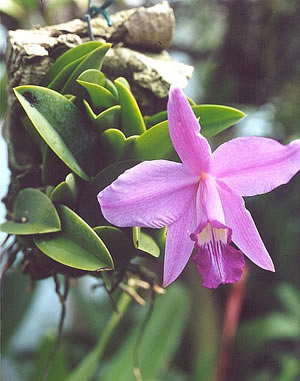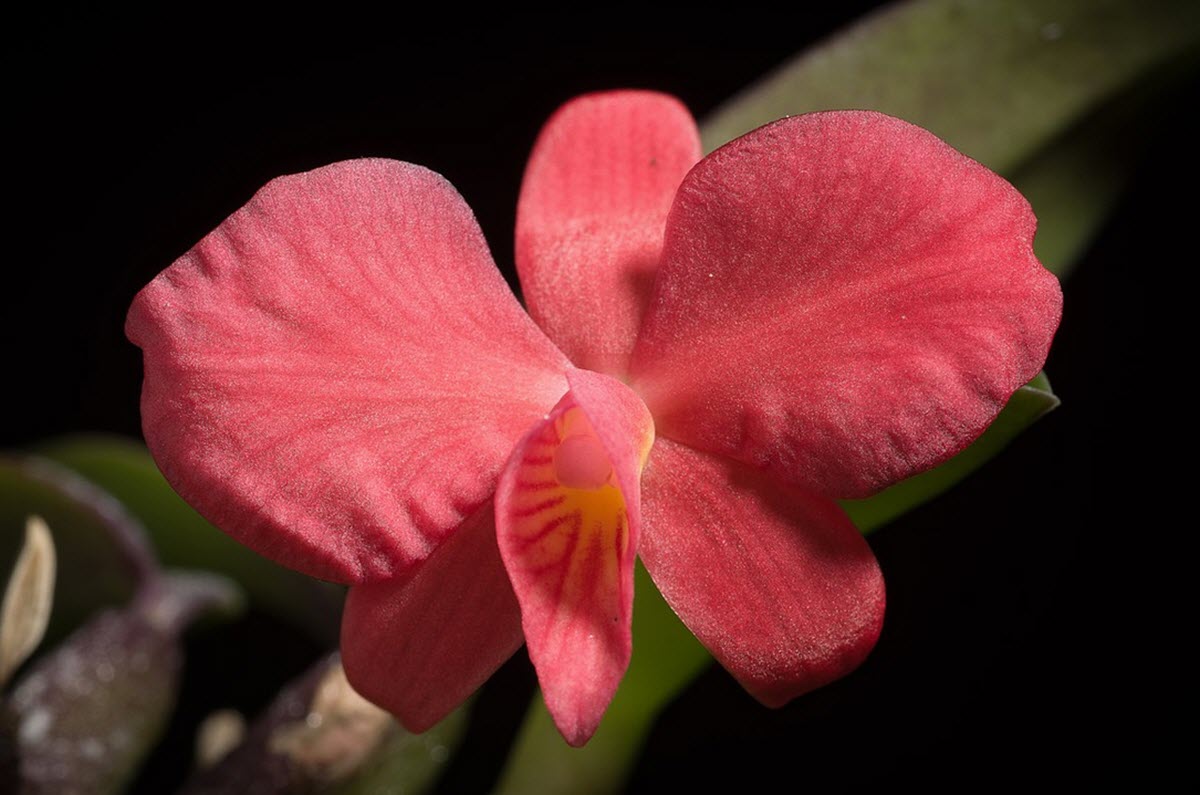Sophronitis Orchid Care
Contents
Sophronitis orchids are found in Brazil, Paraguay and north-eastern Argentina. These orchids are native to damp forests in the mountains and are famous for producing beautifully coloured flowers. Sophronitis orchids are fairly small, but the Sophronitis purpurata produces really big flowers for its size.

Sophronitis sincorana orchid
The leaf of a Sophronitis orchid gives rise to a terminal inflorescence that can develop up to eight flowers. Sometimes, this inflorescence is subtended by a spathaceous bract. The lip of a Sophronitis flower is trilobed with lateral lobes that encircle parts of the column. The midlobe is the smallest one and features a yellow disc. In many flowers, the lip will present some lamellate calli. Sophronitis orchids produce pseudobulbs along the rhizome that are short and ovoid. It is common for the pseudobulbs to appear in dense clusters. The leaves are fleshy and of a gray green shade.
Watering
The watering recommendations for Sophronitis orchids vary from species to species, but a Sophronitis coccinea is for instance used to the moist tropical rainforest, while Sophronitis brevipedunculata grow on open areas subjected to a dry season that can last for months. During this dry season, Sophronitis brevipedunculata survives almost exclusively on night dew. A majority of the Sophronitis will however require a lot of moisture year round. It is recommended to seek more detailed information about your specific Sophronitis species in order to find out more about its watering requirements.
Nutrients
Generally speaking, most Sophronitis species will appreciate a 30-10-10 NPK formula fertilizer during the growth period. Feed your growing Sophronitis orchids at least once a week. Several small servings of weak fertilizing solution several times per week are better than a few big, strong servings. A 10-30-20 NPK formula fertilizer will usually work fine during the maturation period before the orchid starts to bloom. Sophronitis orchids should not be given any nutrients while they are resting.
Temperature
The recommended Sophronitis orchid temperature varies a lot depending on which species you keep. The popular Sophronitis brevipedunculata is one of the few members of this genus that will grow well in warmer temperatures. Its natural home is the state of Minas Gerais in Brazil where it grows in the mountainous interior. In this part of the world, the temperature is usually high during the day and then drops sharply in the evening. Most other Sophronitis orchids prefer cool or intermediate temperatures. The only way to know the ideal temperature for your particular Sophronitis orchid is to research that specific species. Even Sophronitis orchids that grow in the same region can have very different requirements since they grow at different elevations.

Cattleya – Sophronitis – brevipedunculata ( Van den Berg)
Light
The recommended light conditions vary from species to species in this heterogeneous genus. Sophronitis brevipedunculata is for instance accustomed too much more intense light conditions than Sophronitis coccinea. Sophronitis brevipedunculata have developed pseudobulbs and leaves that grow flattened and parallel to the underlying substrate, since this protects the sensitive rhizomes and roots of the orchid from too much light and heat under the strong tropical sun. The same growth pattern can be seen in Sophronitis cernua and Sophronitis wittigiana.
Potting medium
Sophronitis orchids are epiphytic or lithophytic, which means that they grow attached to trees or stones. They will therefore never do well in ordinary soil. A special high-draining potting medium for orchids is necessary, but what is even better is to grow these orchids on blocks or rafts like they would grow in the wild. Very fibrous peat with crushed charcoal is also known to work well as a potting medium for Sophronitis orchids.
Repotting a Sophronitis orchid
Repotting of the Sophronitis orchid can be carried out in spring when new growths are forming. If you prefer to mount the orchid, spread the root system over the mount and then spread a thin layer of coconut fibre, sphagnum moss or similar over the roots of the orchid. An ordinary fishing line can be used to tie everything down.
Sophronitis orchid trivia!
The name of this genus is derived from the Greek word ‘sophronia‘, which means modest. Even though these orchids are small, several species produce showy and vividly red flowers that can hardly be described as modest. Sophronitis orchids have been extensively used to develop large red hybrids by crossing them with larger species from the Cattleya alliance. One of the most commonly used Sophronitis orchids is Sophronitis coccinea, a species that produces fleshy scarlet red blossoms where the lip has a yellow base.